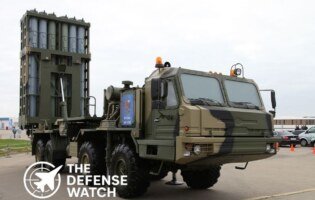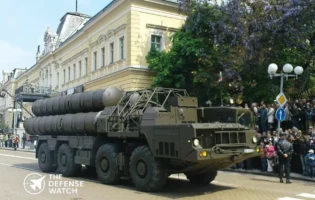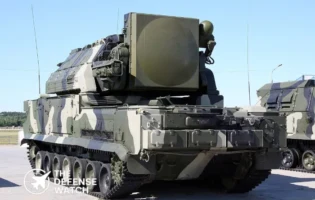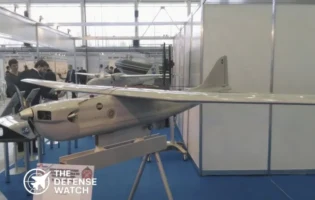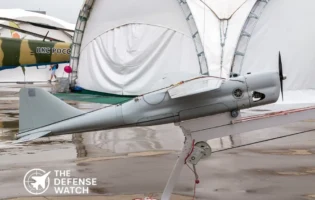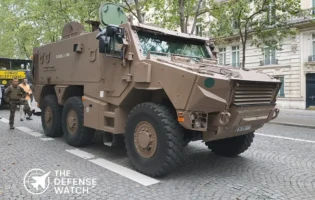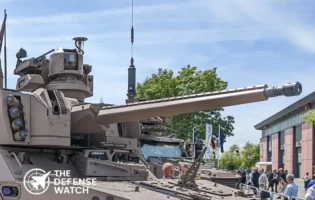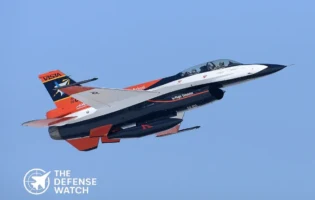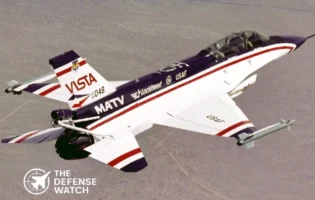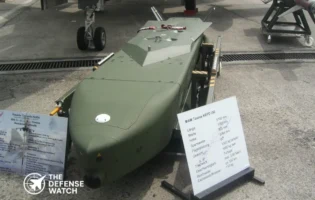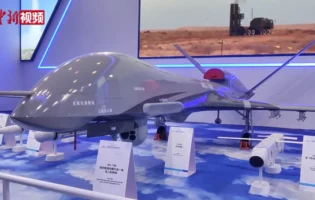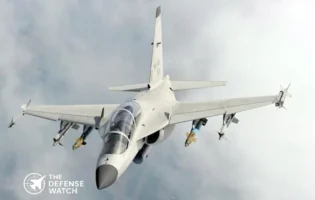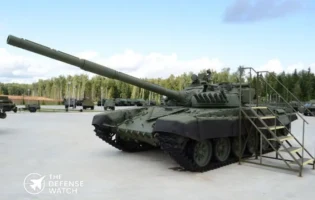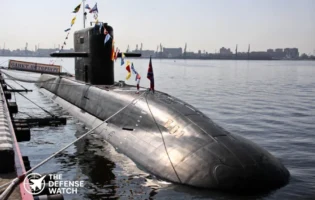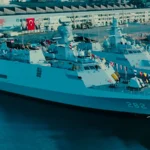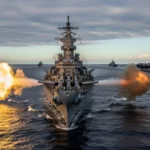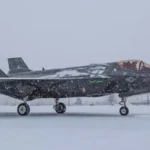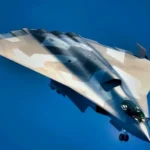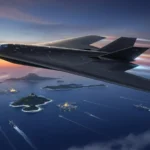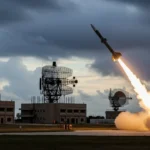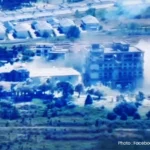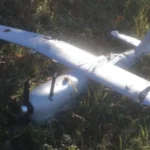- Home
- Catalog
- Defense Systems
- S-400 Triumf Air Defense System
S-400 Triumf Air Defense System




Full Specifications
1. General Information
| System Name | S-400 Triumf (SA-21 Growler) |
| Manufacturer | Almaz-Antey Concern |
| Country of Origin | Russia |
| Type / Role | Long-Range Surface-to-Air Missile System |
| In Service | Yes |
| Year Introduced | 2007 |
| Unit Cost | USD 500 Million (Estimated per Battery) |
2. Performance & Capabilities
| Maximum Engagement Range | 400 km |
| Maximum Engagement Altitude | 30 km |
| Target Types | Aircraft, Cruise Missiles, Ballistic Missiles, UAVs |
| Interception Probability | 80–90% (depending on target type) |
| Reaction Time | 10 seconds |
| Radar Detection Range | Up to 600 km |
3. Missile Specifications
| Missile Type | 48N6DM / 40N6E / 9M96E2 |
| Missile Length | 7.5 m |
| Missile Weight | 1,800–1,900 kg |
| Warhead Type | HE-Fragmentation / Proximity Fuse |
| Warhead Weight | 150 kg |
| Speed | Up to Mach 14 |
4. Radar & Fire Control
| Radar Type | Phased Array / AESA |
| Radar Name | 91N6E Big Bird / 92N6 Grave Stone |
| Detection Range | 600 km |
| Tracking Capacity | 300 Targets |
| Guidance System | Inertial + Active / Semi-Active Homing |
| Fire Control System | Automated Command Post 55K6E |
5. Launcher & Mobility
| Launcher Type | Mobile / Truck-Mounted |
| No. of Missiles per Launcher | 4 |
| Reload Time | 30–60 minutes |
| Mobility Platform | BAZ-64022 / MAZ-7910 8×8 Trucks |
| Crew Required | 3–5 personnel |
6. Command & Control
| C2 System | Battle Management & Control (BMC) |
| Connectivity | Secure Radio / Data Link |
| Network Capability | Yes (Layered Defense Integration) |
| Operation Mode | Autonomous / Networked |
7. Operational Use
| Primary Operator | Russia, China, India, Turkey |
| Combat Proven | Limited (Operational Readiness Confirmed) |
| Conflict History | Syrian Air Defense Network |
| Notable Feature | Multi-missile, multi-target defense capability |
PROS
- Exceptional long-range engagement (up to 400 km)
- Multi-missile system for layered defense
- High-speed interception up to Mach 14
- Advanced radar with 600 km detection range
- Proven integration into national defense networks
CONS
- High procurement and maintenance cost
- Complex training and logistics
- Limited interoperability with Western systems
- Vulnerable to advanced electronic warfare
- Export subject to U.S. sanctions and restrictions
S-400 Triumf: Russia’s Long-Range Air Defense Powerhouse
Developed by Russia’s Almaz-Antey, the S-400 Triumf (NATO codename: SA-21 Growler) stands as one of the world’s most advanced long-range surface-to-air missile (SAM) systems. Introduced into Russian service in 2007, the S-400 was designed to counter a full spectrum of aerial threats—including stealth aircraft, UAVs, cruise missiles, and even intermediate-range ballistic missiles. It forms the backbone of Russia’s integrated air defense network, complementing systems like the S-300 and S-500.
Design and Capabilities
The S-400 integrates a sophisticated multi-layered defense concept. It can deploy up to four different missile types, with ranges from 40 km to 400 km, allowing engagement of targets at various altitudes and distances. The system’s radar suite, notably the 91N6E Big Bird radar, can detect targets at up to 600 km, tracking up to 300 aerial objects simultaneously.
Each S-400 battery comprises a command post, radar unit, and up to 12 truck-mounted launchers, each carrying four missiles. The 48N6DM and 40N6E missiles reach speeds exceeding Mach 14, enabling rapid engagement of fast-moving targets.
Operational flexibility is a hallmark of the S-400—it can operate autonomously or integrate with broader air defense networks. The system has been exported to nations such as China, India, and Turkey, despite ongoing geopolitical scrutiny and U.S. sanctions under CAATSA.
Operational Role
The S-400 provides strategic area defense for critical assets like cities, airbases, and command centers. Its combination of range, precision, and electronic counter-countermeasure (ECCM) capabilities makes it a formidable deterrent against modern air threats.
S-400 Triumf Price in United State
The S-400 Triumf, Russia’s long-range surface-to-air missile defense system, is estimated to cost around USD 500 million per battery in the United States market equivalent. This price includes radar units, command vehicles, launchers, and multiple missile types such as the 48N6DM and 40N6E. Although the S-400 is not available for U.S. purchase due to export restrictions and sanctions, its estimated cost reflects the system’s advanced capabilities, cutting-edge radar technology, and multi-layered missile defense architecture comparable to Western counterparts like the Patriot PAC-3.
Reviews
Disclaimer Note
The information provided on TheDefenseWatch.com is for general informational purposes only. While we strive to ensure the accuracy, completeness, and timeliness of our content regarding defense and aerospace products, technologies, and specifications, we cannot guarantee that all information is 100% accurate or up-to-date due to the evolving nature of military technology and classified data. TheDefenseWatch.com does not warrant the reliability, suitability, or availability of the information for any specific purpose. Users are advised to consult official sources, such as manufacturers, government publications, or defense agencies, for precise and verified data before making decisions based on our content. We are not affiliated with any defense manufacturers, governments, or military organizations mentioned. Opinions, reviews, and ratings reflect expert analysis but are subjective and should not be considered endorsements. TheDefenseWatch.com is not responsible for any errors, omissions, or consequences arising from the use of this website’s content. External links are provided for convenience and do not imply endorsement. TheDefenseWatch.com reserves the right to update or modify content without prior notice. By using this website, you agree to our Privacy & Cookies Policy.

